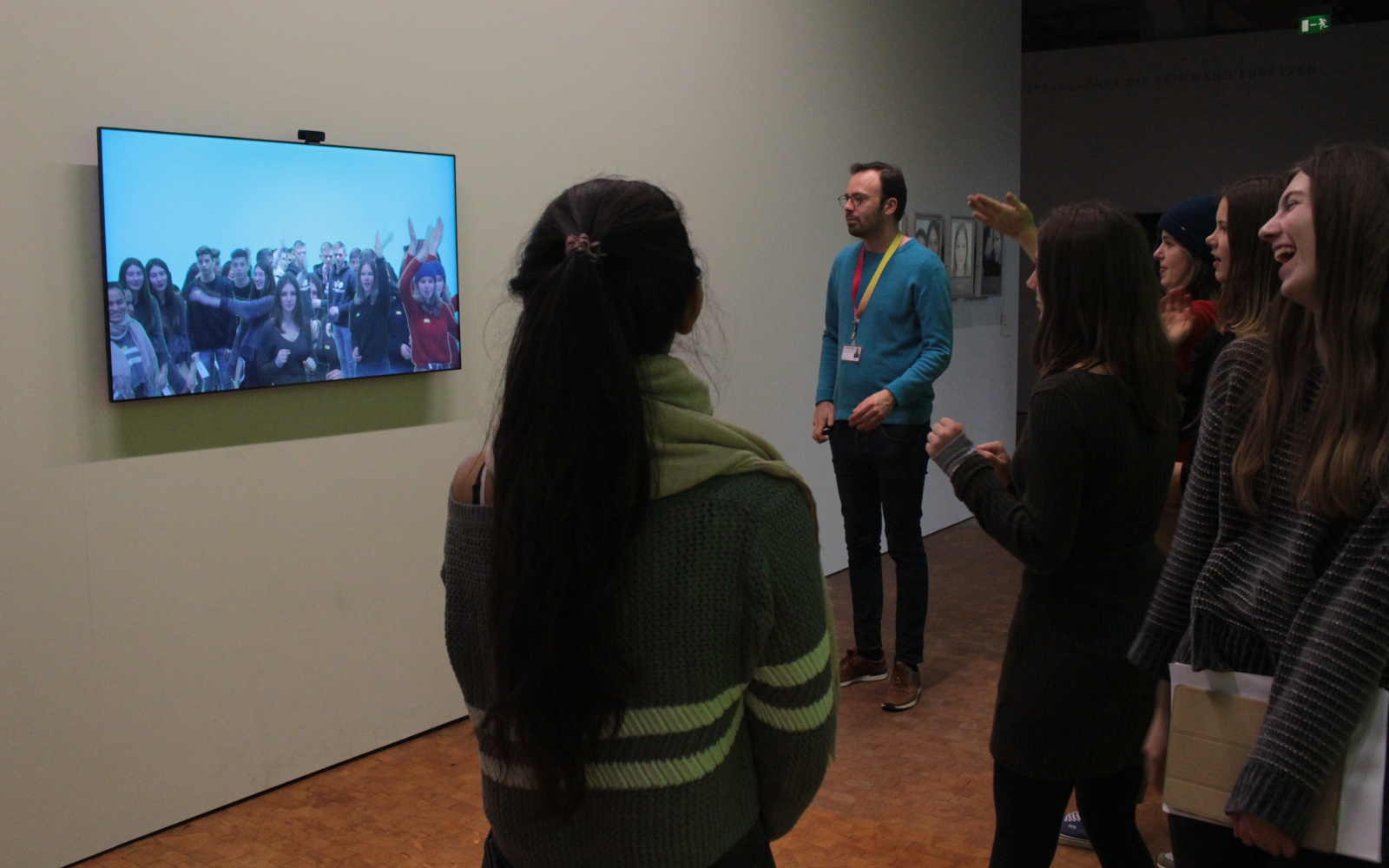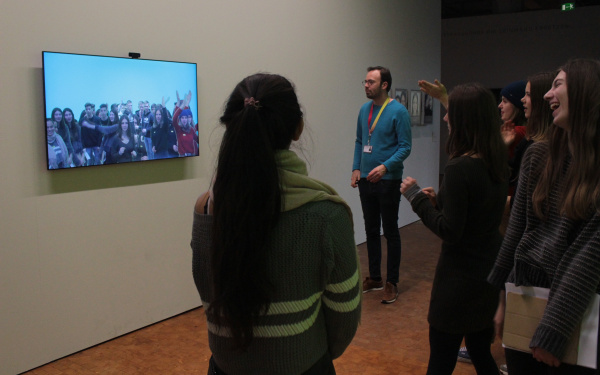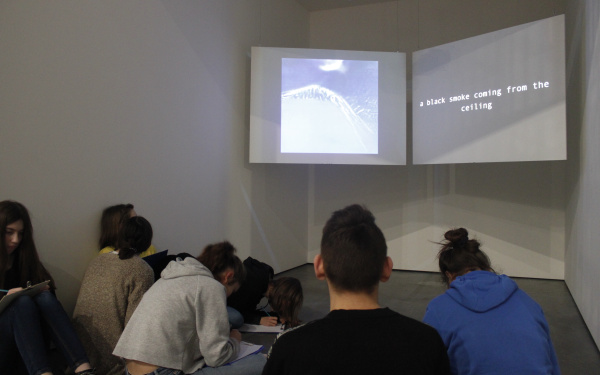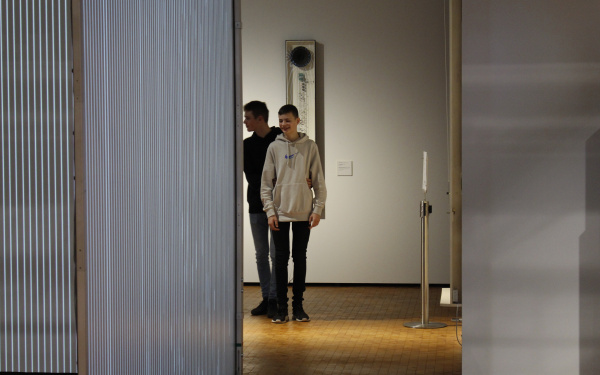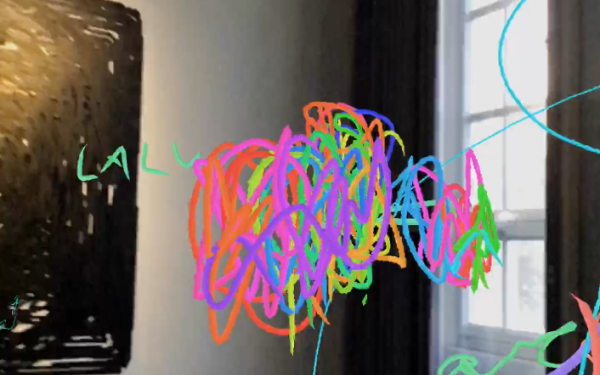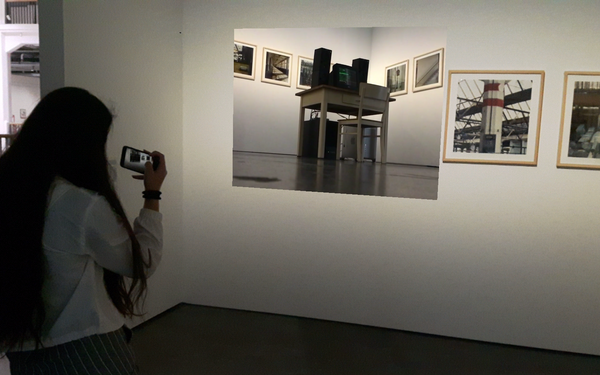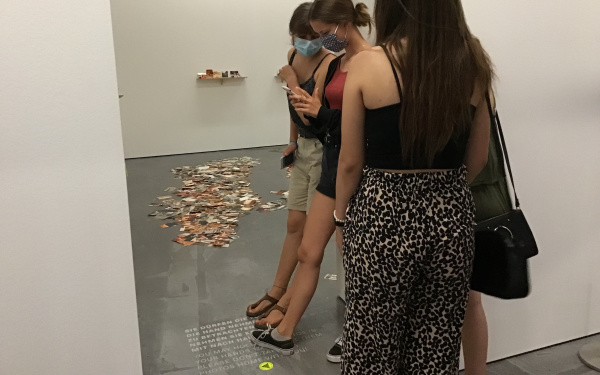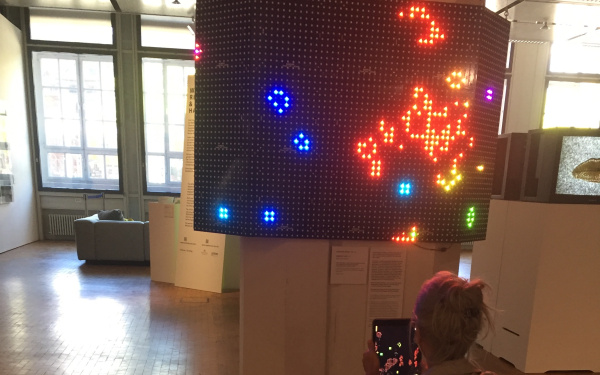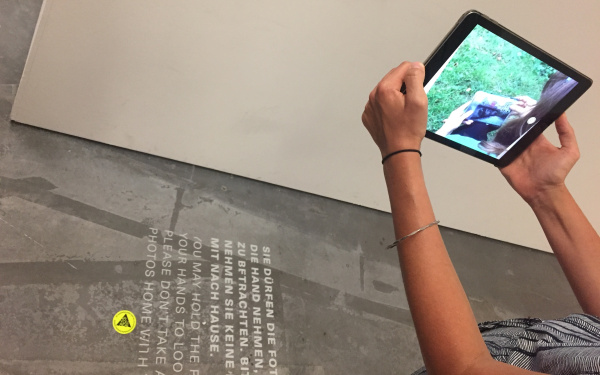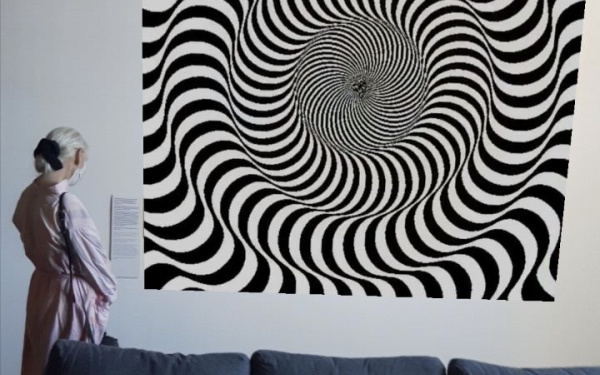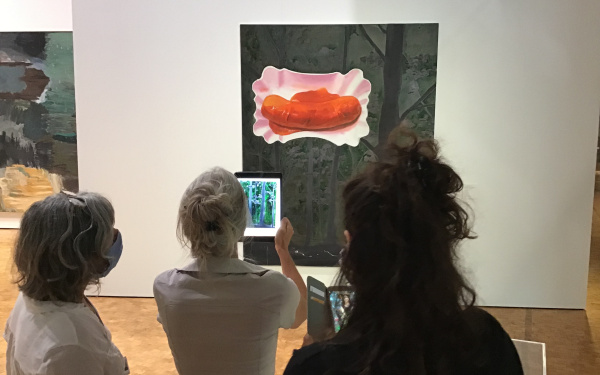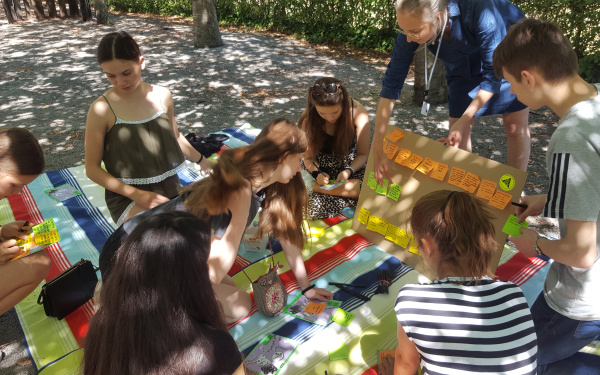AR:U:REAL
A school project with the Max Planck Gymnasium
»AR:U:REAL« invited the 10th grade students of the Max Planck Gymnasium to take an exploratory approach to the current ZKM Collection exhibition over the course of a school year. In a creative exchange of ideas, they investigated (media) art historical developments, questioned these critically and tested artistic strategies. In a further step, they developed an exhibition walk using Augmented Reality (AR). For this, they linked the works with their own artistic executions in real and virtual space.
Developments that are now a natural part of our media society have already been taken up and thematised artistically in the middle of the 20th century. The exhibition »Writing the History of the Future – The ZKM Collection« traces the media transformation of the 20th century. This also includes works that deal with augmented reality – the computer-aided extension of reality. Haptically real and digital experience merge into one another. Objects in an AR environment are close enough to touch – and at the same time not. Whether in education, in technical or medical professions or in the entertainment industry – AR finds many fields of application today and has become part of our communicative and aesthetic practice. Dealing with AR thus starts with the media world of the students.
In the first half of the project with the 11 students of the Max Planck Gymnasium, the focus was on familiarizing them with the exhibition. Various interactive actions before and with selected works were used to highlight the different thematic areas of the exhibition. Reactions of the students were formulated with different artistic strategies using photography, 3D pens, moving image experiments and lyrical texts.
During this phase it became clear that the project would have to overcome many hurdles. At first, the AR app that was chosen for the project was no longer available because the manufacturer had discontinued the app. In the spring after half of the project, the lockdown came due to the Corona pandemic, which made a personal meeting with the group impossible. And in the course of spring came the news that the exhibition would be closed for the time being over summer and fall in order to make it Corona-compliant, i.e. making the walk visible to the public would be delayed until further notice.
Nevertheless, the project was successfully completed. The meetings were held via video conference during the lockdown and continued to be planned, discussed and pedagogically supported in the development of the individual stations of the walk. The interactive design of the project was maintained with various online tools and it was also possible to work in groups on individual stations via video conference. Finally, the reactions of the students were uploaded via the app »Artivive« and fed into the AR for the works in the collection exhibition. Markers, i.e. images of the works, were deposited for this purpose. In addition, a neon yellow sticker was created, which shows the way to the individual stations in the exhibition. A display at the entrance to the exhibition with a deposited AR now shows all visitors how to call up the walk. Videos were compiled with their own intellectual continuations of the works, visual alienations and extensions, descriptions of the works and comments.
With the help of digital AR technology, the project aims to add a participatory level to the exhibition. The students curated and presented their very personal approach to the artworks and themes in virtual space – and yet very close to the exhibits of the collection. They became visitors, artists and mediators at the same time. They developed strategies by means of AR. The result was an AR walk that opens up new perspectives on the collection exhibition for visitors to the ZKM and implements the traces of the debate in a lasting way in the exhibition.
Credits
- Concept
- Concept
Sponsors
Funded by the support of »School and Culture« of the Cultural Office of the City of Karlsruhe.
-
Funded by
